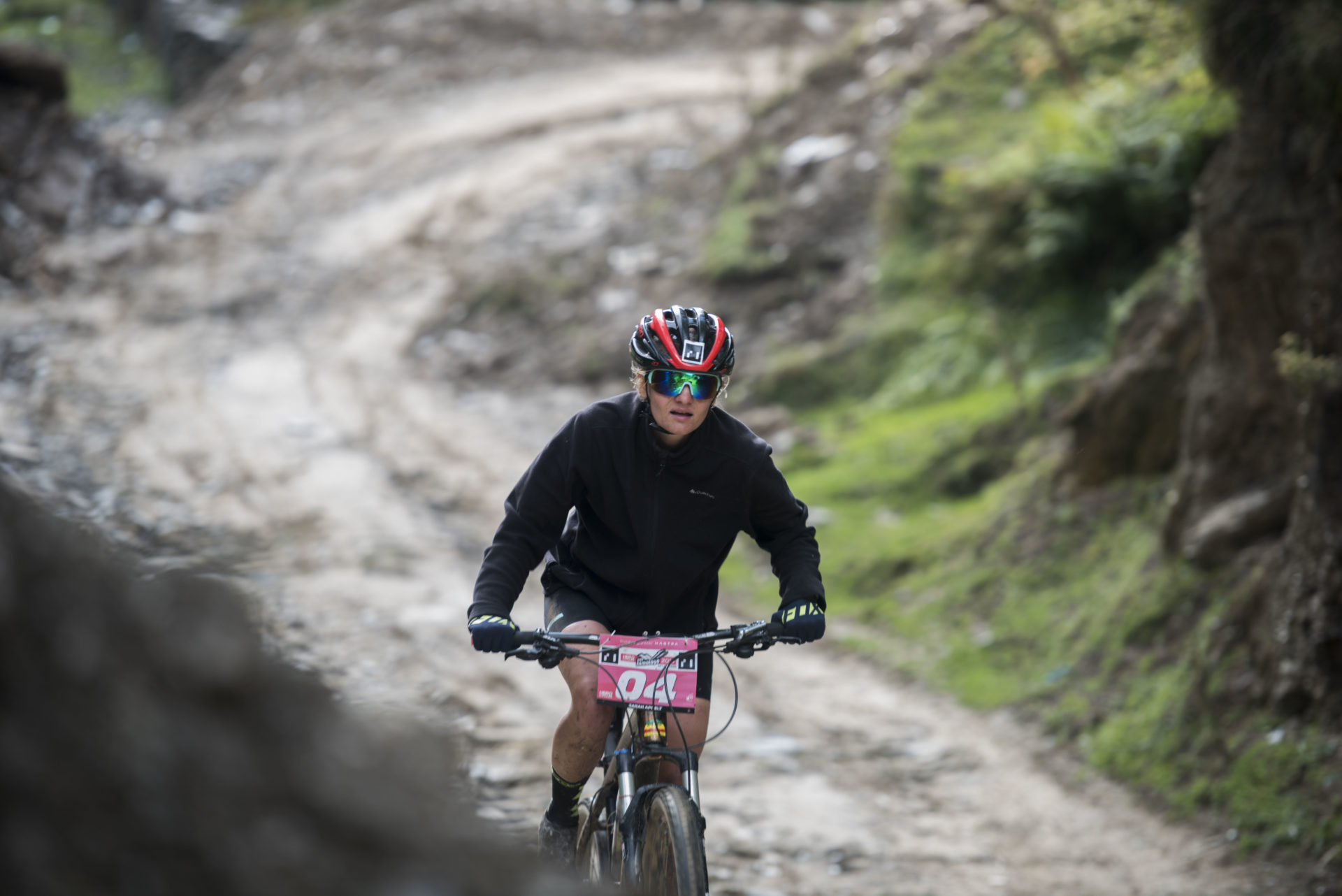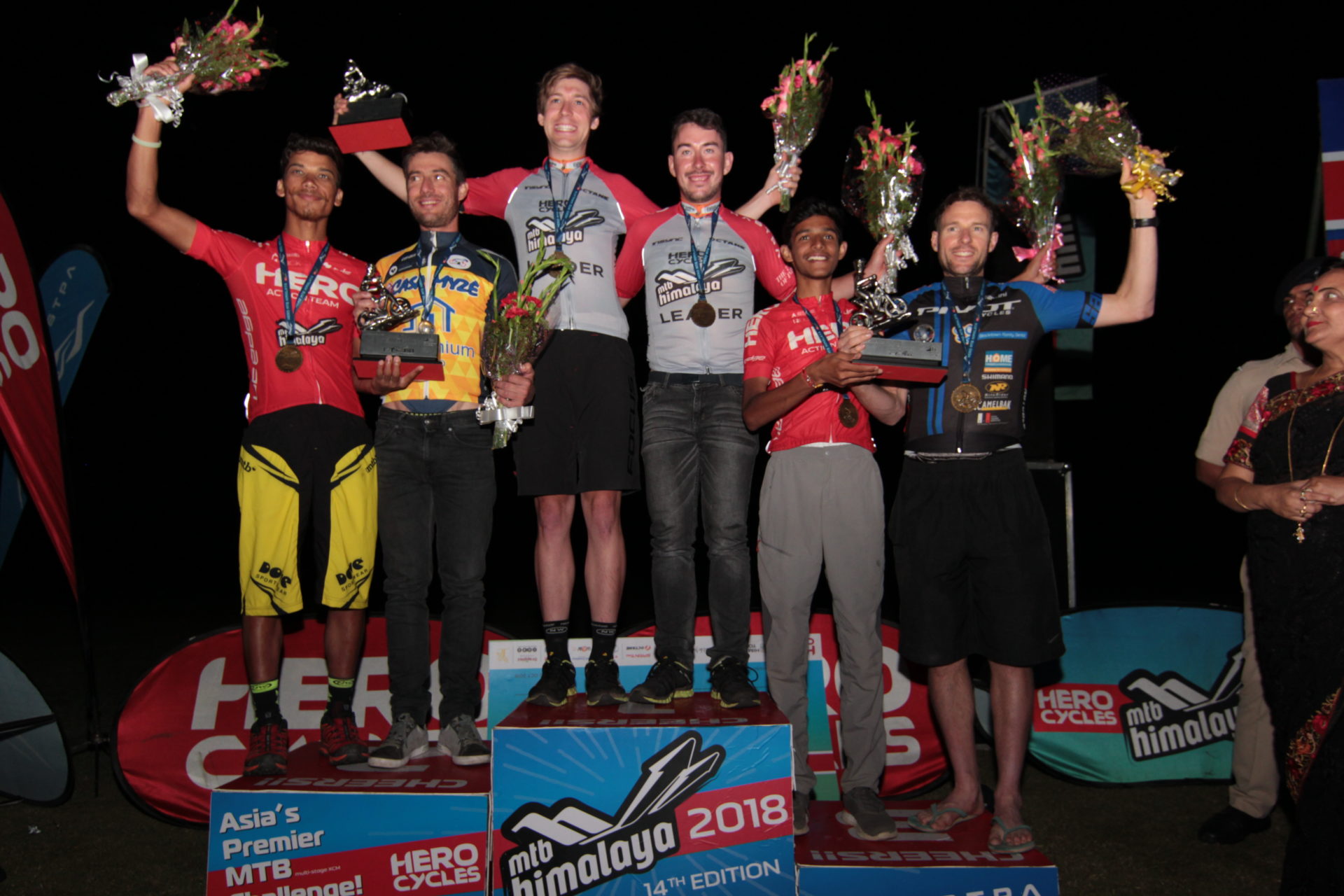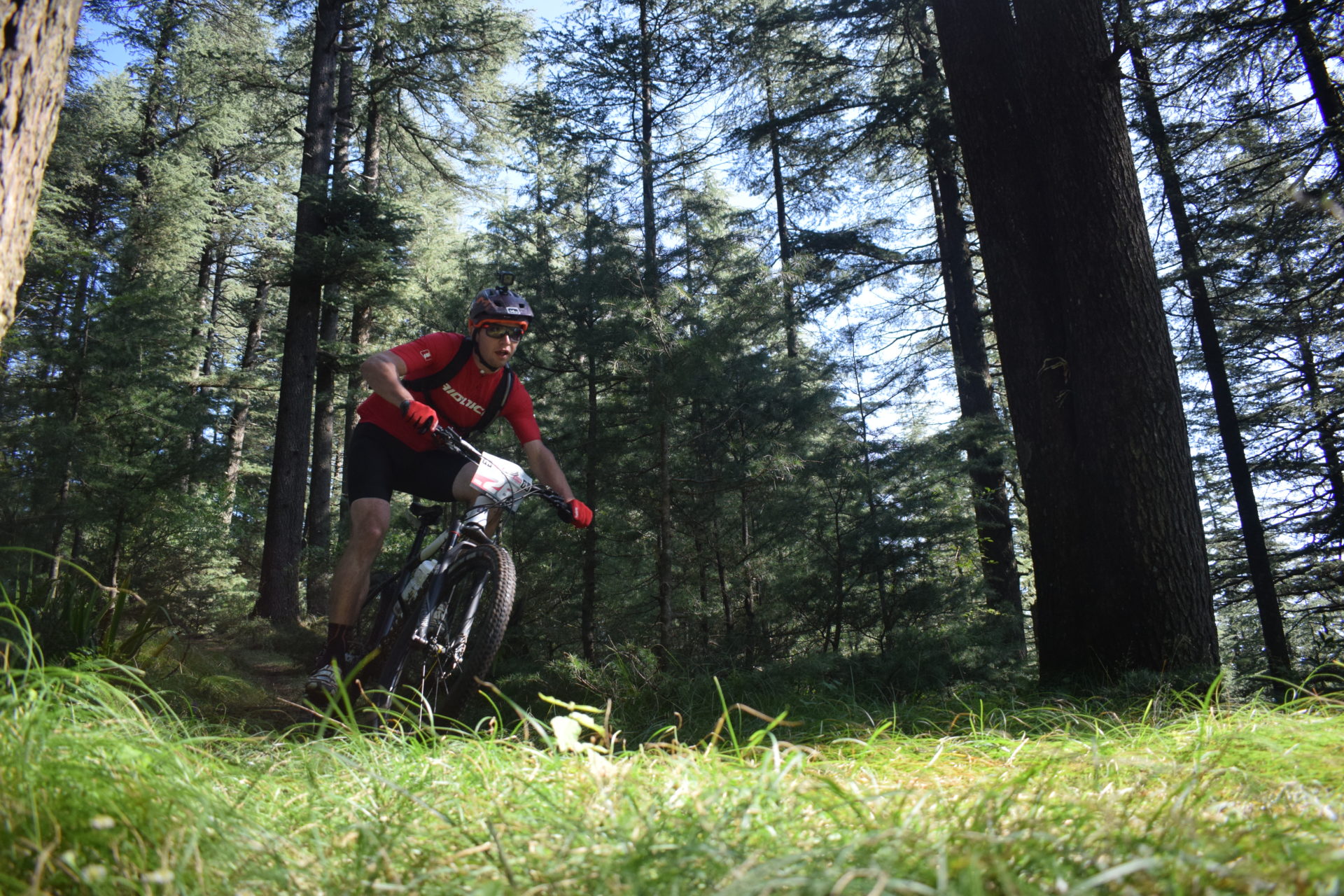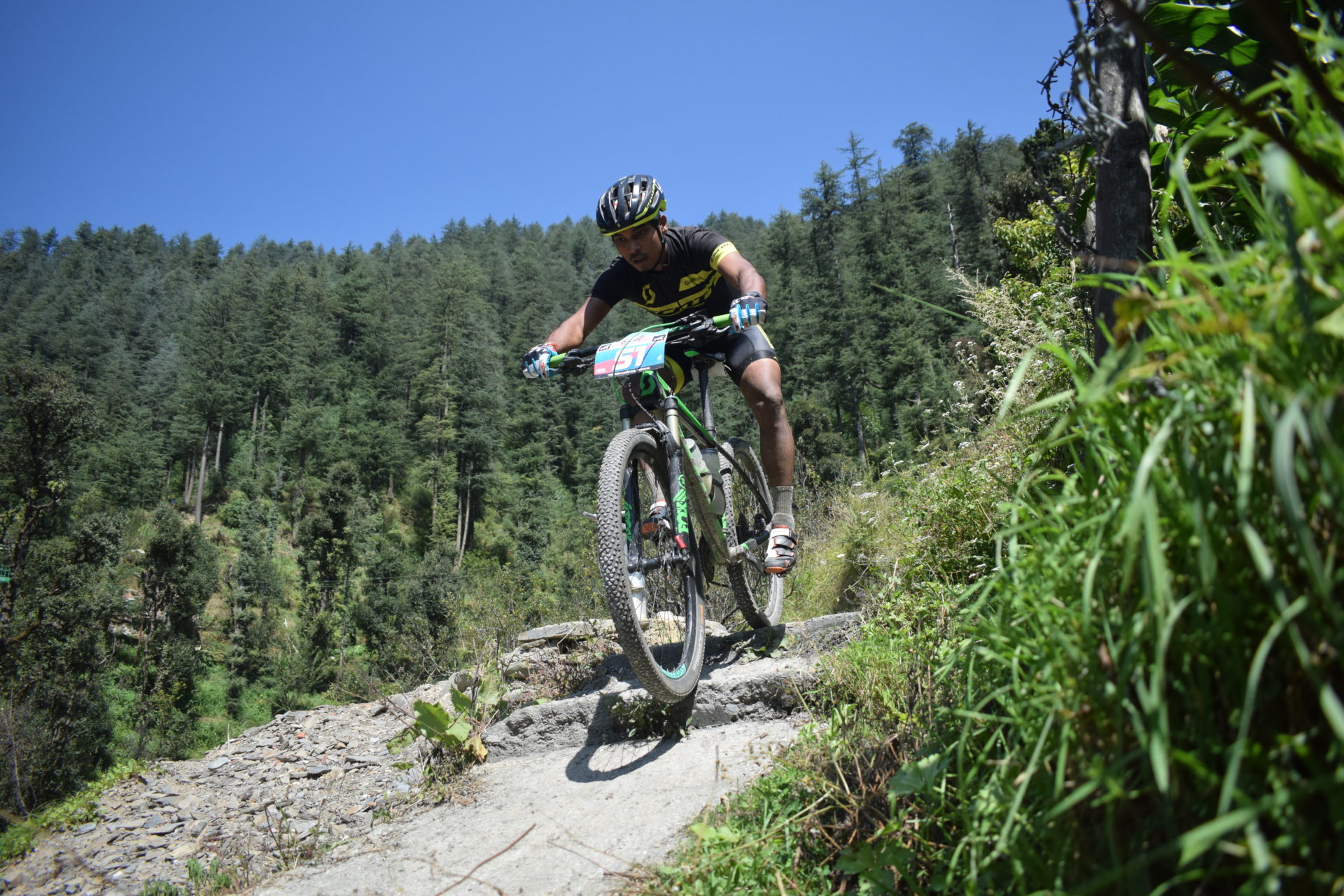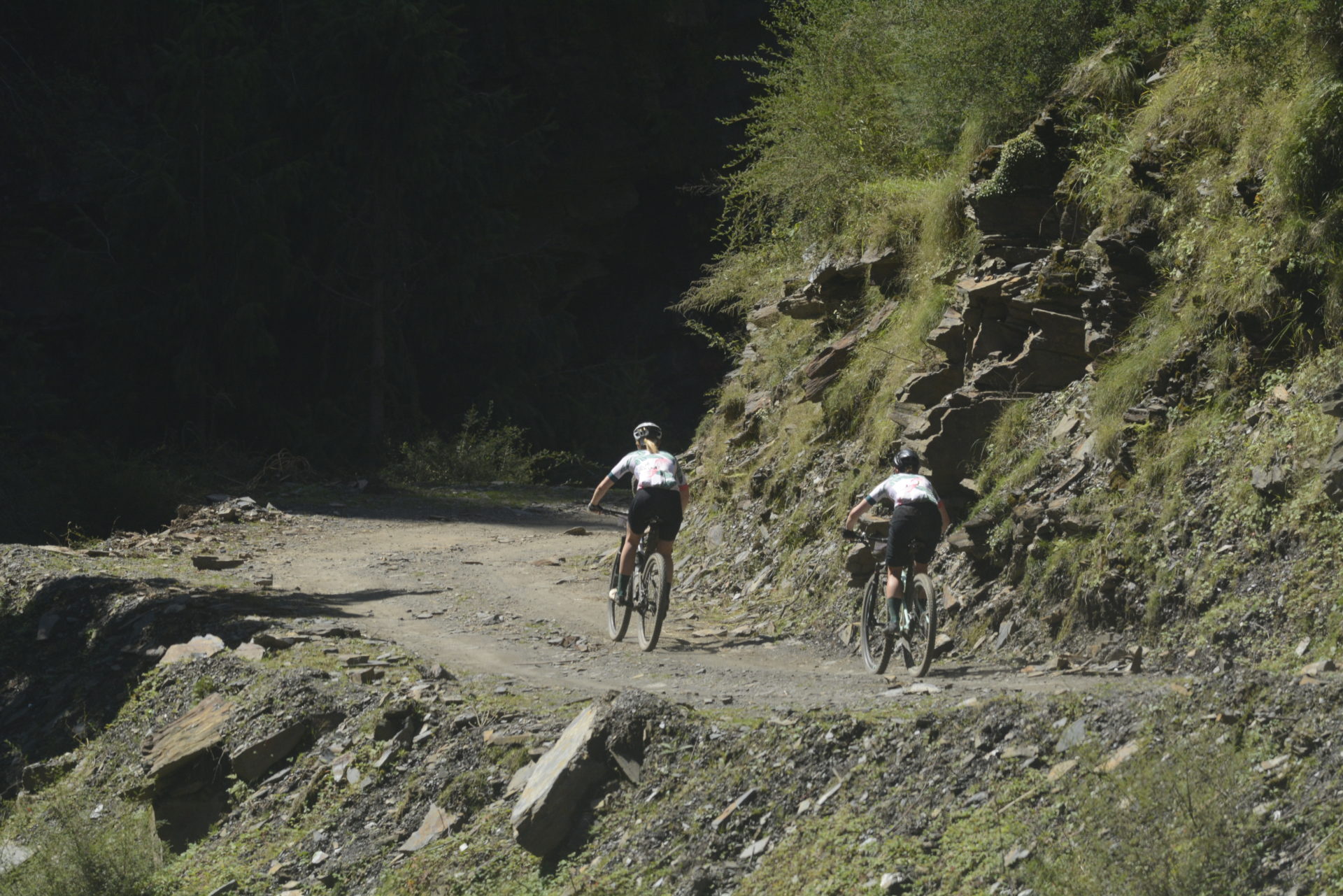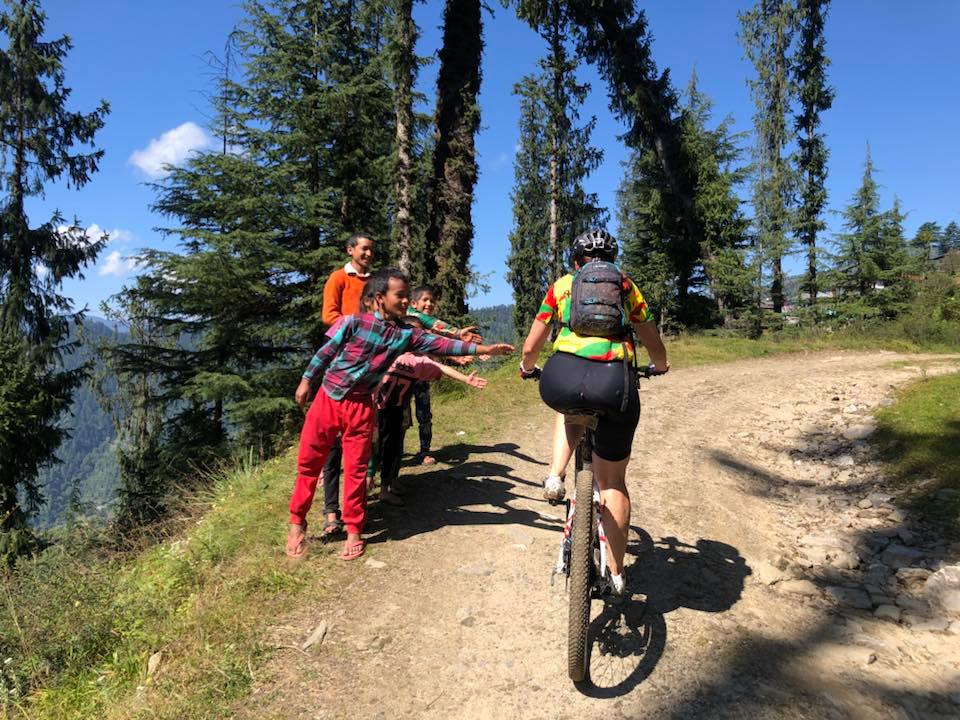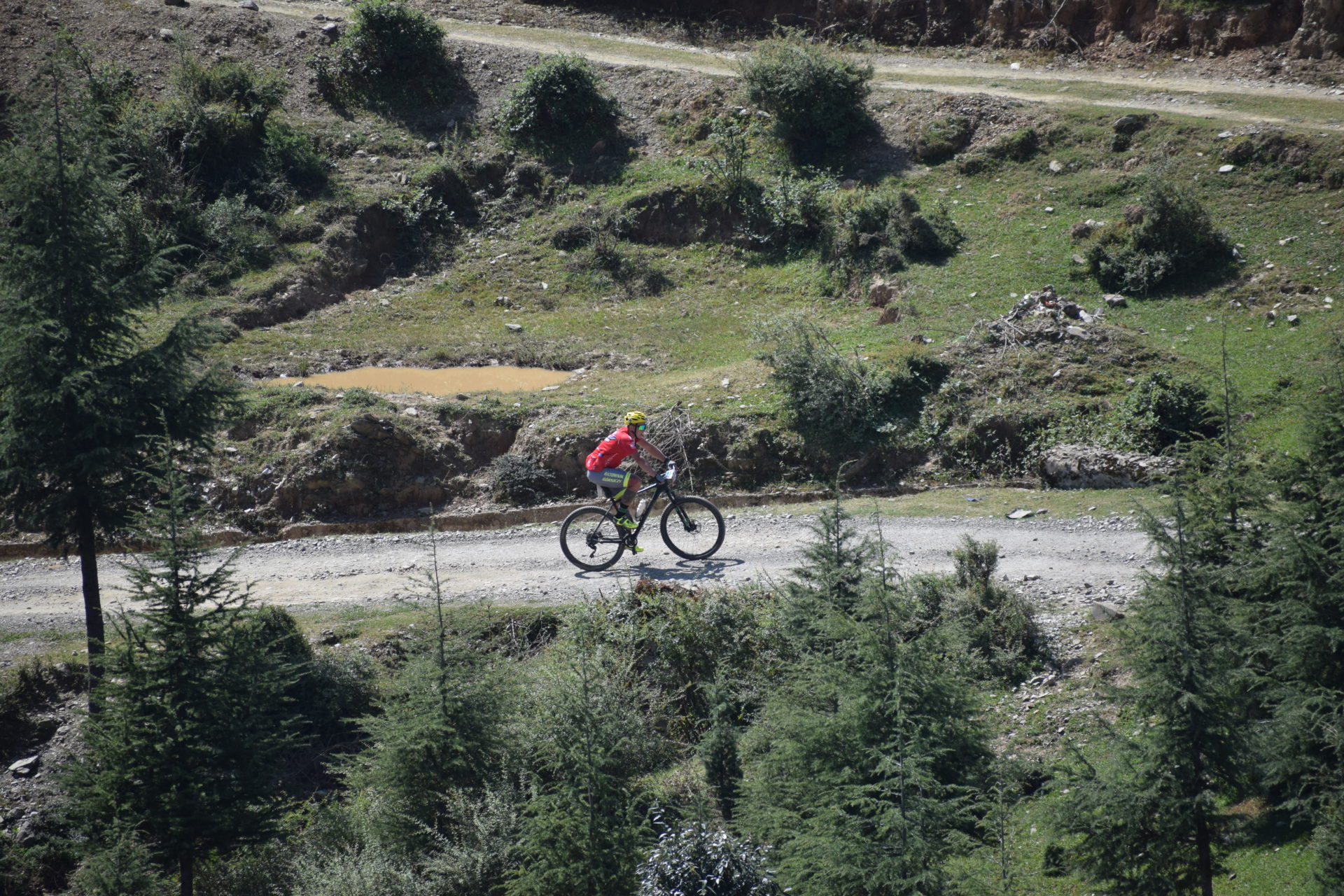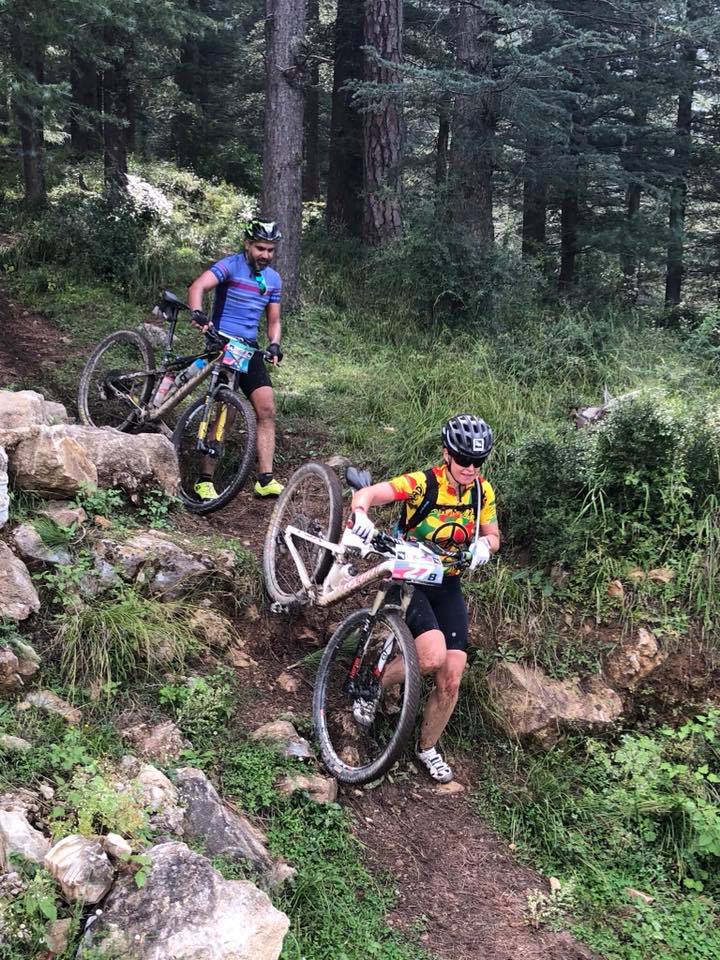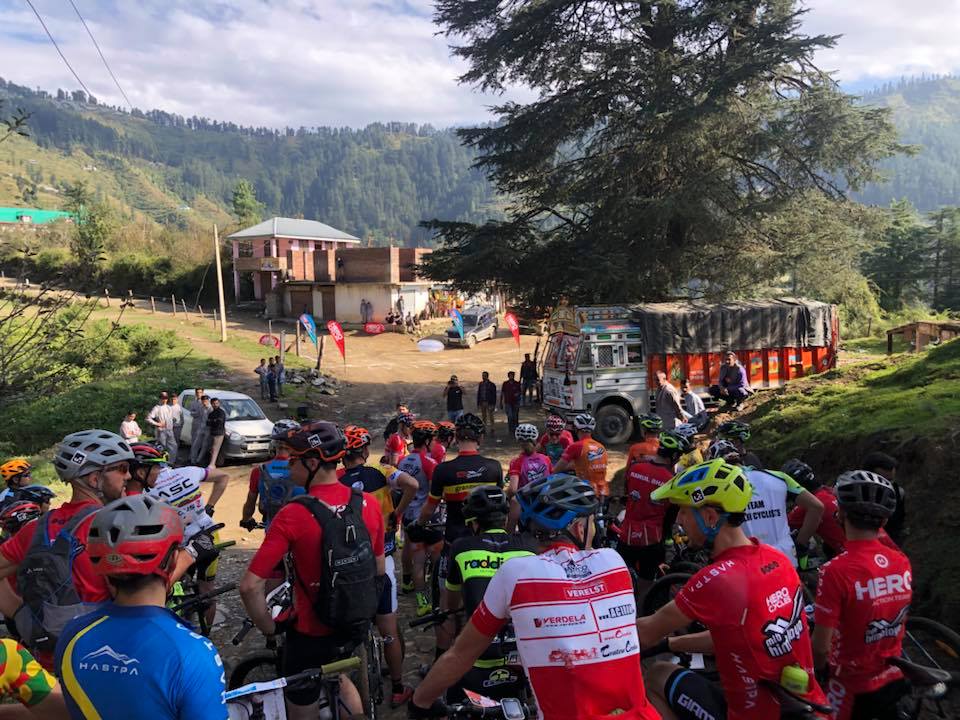
For the third time I took part in the stage race MTB Himalaya through the Indian Himalayas. This time even I got on 3rd position in the women category.
On this blog I have already reported extensively about my race participations in 2015 and 2016. The race was quite similar again this year, regarding organization (challenging routes, great landscapes, great camps, good food, interesting participants), as well as from my personal viewpoint (fun event, a lot of torment during the stages and ultimately successful finish of one of the toughest mountain bike races in the world).
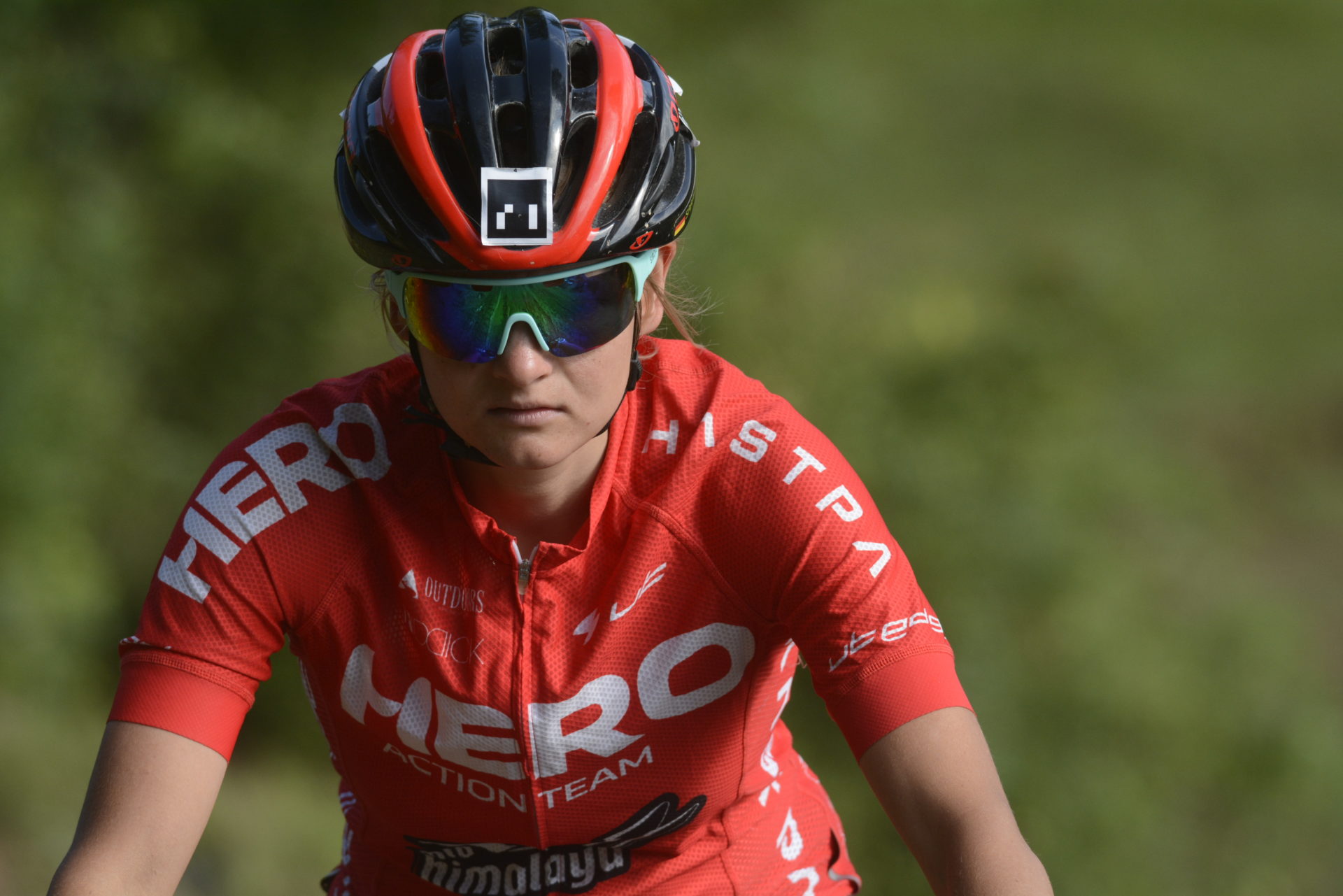
Since I was able to experience my first stage race outside India this year and had the opportunity to participate in the Sigma Bike Transalp in the summer, I dare to compare these two races, so that a better idea of the MTB Himalaya can be conveyed. I just assume that one or the other mountain biker may even have participated in the Bike Transalp once. By the way, I offer a complete package (trekking and Taj Mahal visit and the total transport) every year for MTB Himalaya and can also help with the organization of arraning individual wishes.
The comparison
| Hero MTB Himalaya- So much more than just a Race
http://heromtbhimalaya.com/ Report MTB Himalaya 2016 |
Sigma Bike Transalp – Can’t copy the Alps
https://bike-transalp.de/ Report the Bike Transalp 2018 |
| Facts | |
| 650 km, 16000 meters of altitude, 10 days, 8 race days, end of September, approx. 85 participants | 500 km, 18000 meters of altitude, 8 days, 7 race days, July, approx. 800 participants |
| 999 . . . . . . . | 899 € |
| Included services | |
| Accommodation in hotels and tents with mattresses and sleeping bags
Full catering Bikewash Mechanic Baggage Bicycle bag transport Jersey Shirt Finisher Medal Goodies Closing party |
Food stations during the race
Snack after the race Dinner Bikewash Baggage Finisher jersey Finisher Medal Closing party Goodies |
| Bookable services | |
| Massage
Transport to the starting point and the end point |
Massage
Bicycle service Return transport to start Bicycle bags transport Camp in gymnasiums with breakfast/hotel |
| Categories
|
|
| Open Men Solo
Open Women Solo Master Grandmaster Team of Two |
Team of Two Men
Team of Two Women Team of Two Mixed Team of Two Master Team of Two Grandmaster |
| Stages and routes
|
|
| Having raced both races so close behind each other, I can say that the stages of both races are very similar, both in terms of profile, terrain and landscape.
In both races, between 60 and 100 km and around 1500 to 3000 metres are of altitude are covered daily, with a good mix of off-road, single trails and even asphalted road. In both races, the amount in percentage of the specificis survaces are pretty much the same. In the MTB Himalaya race, however, the off-road passages and also the single trails are a bit rougher, more natural. While the Biketransalp also goes on laid out paths in bike parks, the trails in the Himalayas are rather cow paths. Marking in both racesare good. There is also GPS data for the Transalp and the MTB Himalaya painted just so many arrows that you can’t actually get wrong.
Both races are attractive regarding the route. Crossing the Alps at the Bike Transalp is terrific. But also the route from Shimla to Daramshala at Hero MTB Himalaya connects two touristically interesting destinations and also leads through scenic areas with a lot of nature and culture. In both races you can enjoy scenic highlights with mountain lakes, villages, forests and passes.
Regarding the physical effort, I found the MTB Himalaya more intense and needed a lot more time for the daily stages. For one thing, it was probably because of my weak health condition. On the other hand, due to the technical difficulty of some segments during the MTB Himalaya stage, where I had to push the bike quite a bit. Also the climbs at the MTB Himalaya Race are a bit steeper and on the Himalayan underground it doesn’t roll quite so well. Even if you have a paved road, the potholes are not far.
With good fitness, joy in mountain biking and good skills, however, both tours can be mastered well. In the end, it is a success to have completed the entire race, even if you are not the winner on the podium. This is applicable for both races. |
|
| Atmosphere | |
Sure, the Bike Transalp is a classic and with over 650 riders to cross the Alps is a very special feeling, especially when you roll over the finish line in Arco at Lake Garda. Nevertheless, the MTB Himalaya is something very special. Be it because the Indians are such warm hosts, because the number of participants is smaller, or because simply all – from professionals to beginners – are accommodated in the same camp. Maybe it’s a mixture of all that. In any case, it is simply fun to sit together after the stages, to share the experiences of the day or to explore the area together.
At the end of the race, everyone knows everyone. In addition, the organizer offers a lot of cultural program during the race. The race starts with a Hindu fire ceremony, on the day of rest you can visit a school and in the evening you dance around the campfire together.
This is a little different with the Biketransalp. Everything is much more anonymous. Only if staying in the so called “camps” (mostly in the Gyms) you get to know each other a little while snoring together. Otherwise, everyone stays quite seperated in hotels and takes the race much more seriously. |
|
| Meals | |
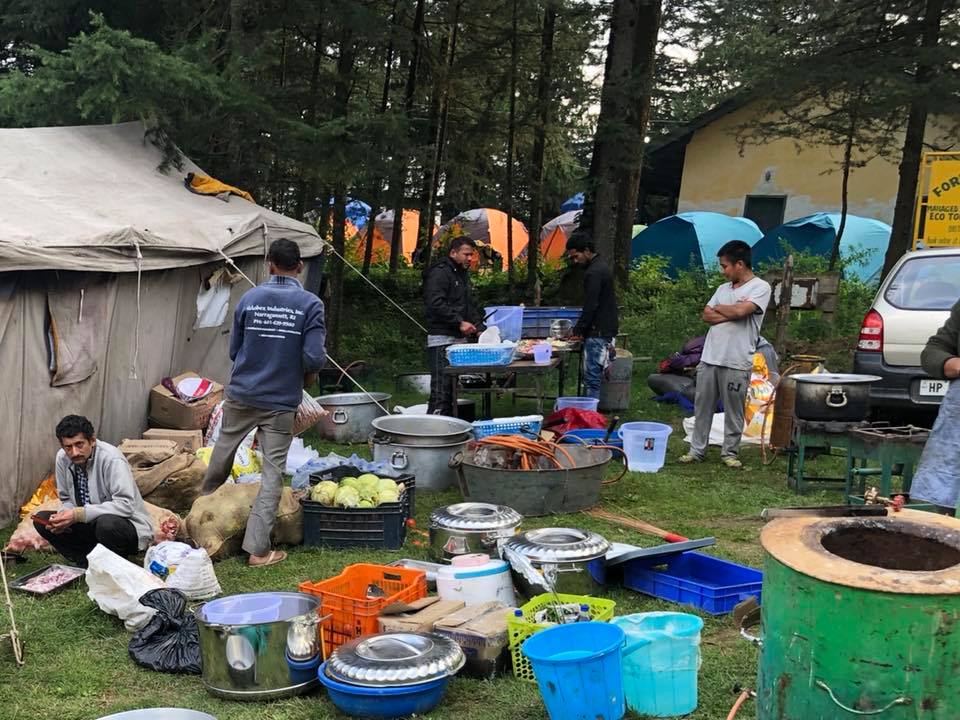 I had already mentioned that Indians are very good hosts and that is shown in the catering. A kitchen team cooks delicious food in the camp from early to late, and the buffet is stocked with a wide range of continental and Indian dishes. This is where meat eaters and vegetarians get their money’s worth. The two to three catering stations are also well filled. The men and women during the catering stations at the bike Transalp are little more professional, than the Himalaya Team. With a nimble hand, cakes and watermelon are cut open and the bottles are quickly filled with water and electrolytes from large watering cans. But the meals around the Transalp race are rather poor and not adequate food for cyclists during an extreme race. Spagetti Bolognese on the fifth day in a row is unfortunately not really exciting anymore. I had already mentioned that Indians are very good hosts and that is shown in the catering. A kitchen team cooks delicious food in the camp from early to late, and the buffet is stocked with a wide range of continental and Indian dishes. This is where meat eaters and vegetarians get their money’s worth. The two to three catering stations are also well filled. The men and women during the catering stations at the bike Transalp are little more professional, than the Himalaya Team. With a nimble hand, cakes and watermelon are cut open and the bottles are quickly filled with water and electrolytes from large watering cans. But the meals around the Transalp race are rather poor and not adequate food for cyclists during an extreme race. Spagetti Bolognese on the fifth day in a row is unfortunately not really exciting anymore. |
|
| Organisation and stations in between | |
The organization of the Bike Transalp is perfect. There is simply nothing to complain about in the German organisation. In India, things are a little more flexible: time indications are not taken quite so accurately. Breakfast can also be served half an hour later. But here, too, everything always works out in the end, albeit a little more serenely.
While the Bike Transalp stages end and start in small Alpine towns, whose inhabitants are also the hosts at the same time, during the MTB Himalaya one lives in a small camp in tents in small villages in the middle of nature. On arrival, the tents are set up, you get mattresses and sleeping bags and there are showers, toilets and dining tents. At the Bike Transalp you have the choice: Either you sleep inexpensive in mass accommodation in gymnasiums or sports halls. To do this, you need your own mattress and a sleeping bag. Or you can choose the more luxurious option and sleep in hotels. Purely logistically, it is a bit more complex during the Transalp and often a little more complicated for the participants. If one is lucky, the camp, the dinner area and the bikewash are close together. Sometimes, however, you have to walk through the small towns quite nicely back and forth. At MTB Himalaya, everything is at one place. |
|
| Participants | |
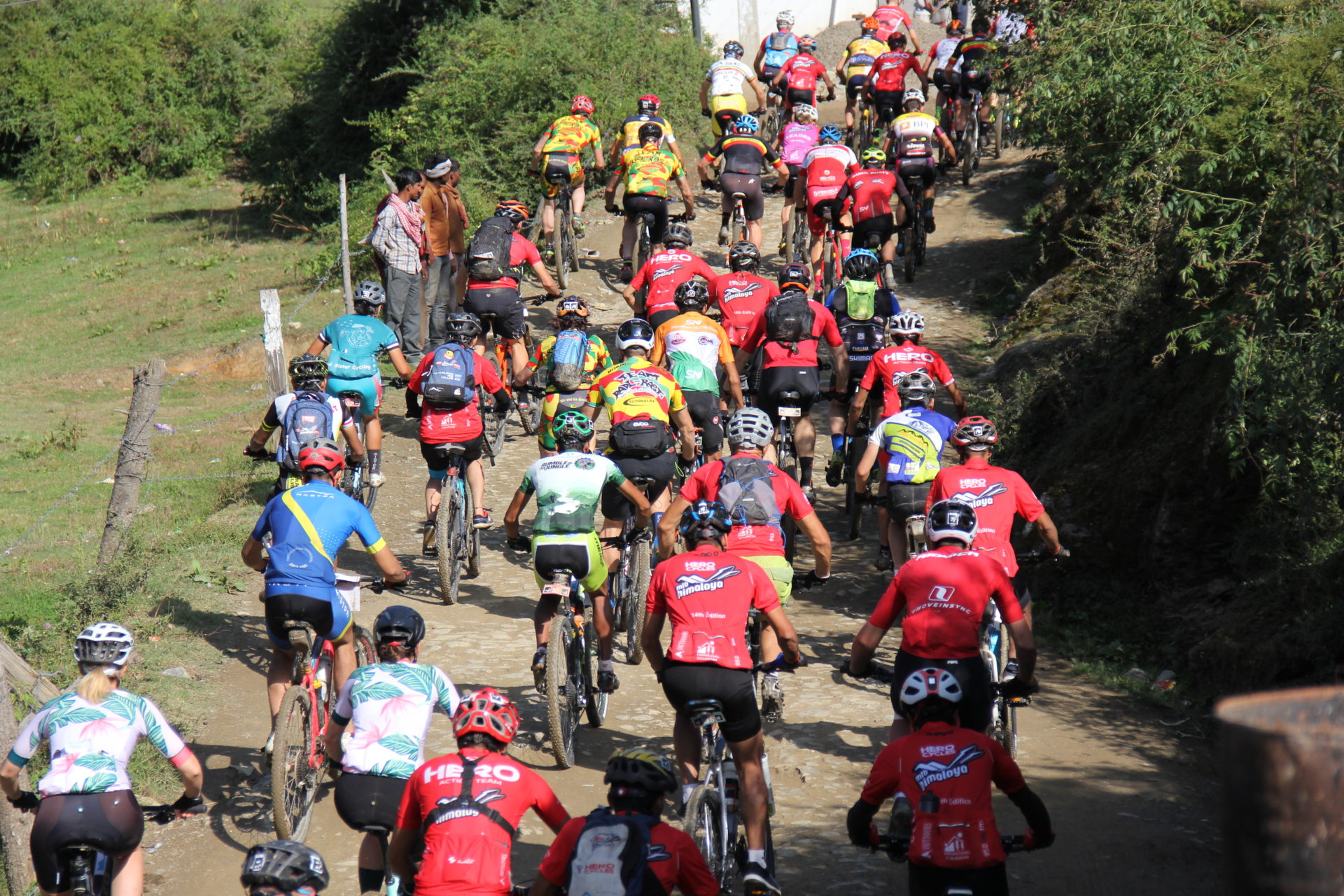 800 participants or 80 participants – that makes a big difference. Nevertheless, both races have a similar participant profile: mountain bikers from all over the world and on every level: Whether professional or hobby mountain biker and adventurer, in both races each participant can be found. While during the Bike Transalp one is surrounded by riders all the time and throughout the stage and is never really alone, the field at the MTB Himalaya is much more apart and as a solo rider it can happen that you are alone for a few kilometers or hours without meeting any soul.. 800 participants or 80 participants – that makes a big difference. Nevertheless, both races have a similar participant profile: mountain bikers from all over the world and on every level: Whether professional or hobby mountain biker and adventurer, in both races each participant can be found. While during the Bike Transalp one is surrounded by riders all the time and throughout the stage and is never really alone, the field at the MTB Himalaya is much more apart and as a solo rider it can happen that you are alone for a few kilometers or hours without meeting any soul.. |
|
| Security | |
| When it comes to security, the Transalp organisation is clearly ahead of the pack. Not that the organizers of the MTB Himalaya do not also do everything possible to enable a quick recovery. But there is no such thing as a five-minute helicopter rescue and a professional team of doctors on motorcycle cross machines, as it is in the alps. Nevertheless, there are route posts that diligently list the participants, so that lost riders can be found quickly. Also at the MTB Himalaya there is a doctor on camp. | |
| Conclusion | |
| Both the MTB Himalaya and the Bike Transalp are great events. I had a lot of fun in both races and I plan to participate in both races in the next few years.
Route-wise and in terms of ambition, the races are very similar. While the Bike Transalp is a classic, the MTB Himalaya is pure fun for adventurous mountain bikers.
The MTB Himalaya is so much more than just a race and at the end of the 10 days, you not only had an incredible riding fun, but also got to know a lot of the country and people and made new friends. The Bike Transalp can’t keep up with that, although the entire organization and the number of participants are on a completely different level for sure. Definitely you get more for your money at the MTB Himalaya – but it also takes place in cheap India and not in the Alps.
A clear pluspoint at the MTB Himalaya Race: The cultural program on offer! Fire ceremony at the start of the race, school visits in between, traditional dance around the campfire. Here the participants really get to know that they are in India! |
|



